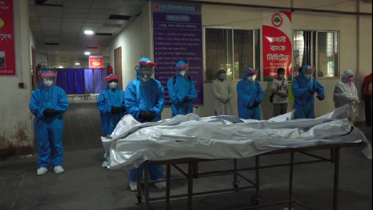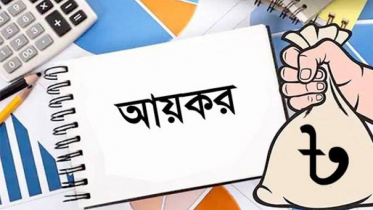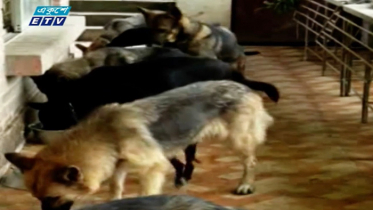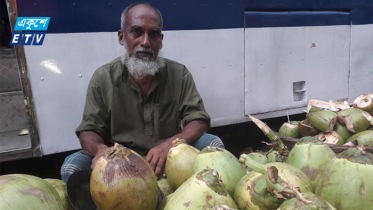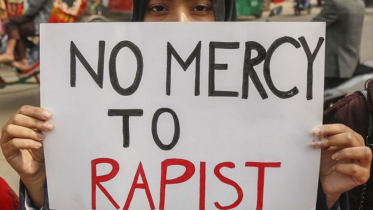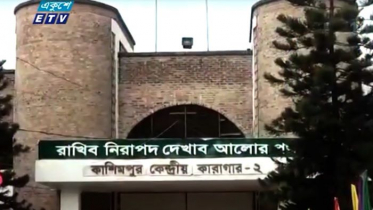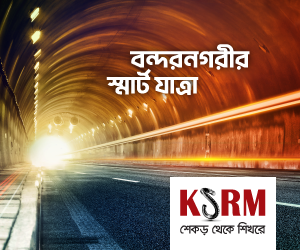Homeless people in lurch
প্রকাশিত : ২০:৩১, ২৬ সেপ্টেম্বর ২০২২
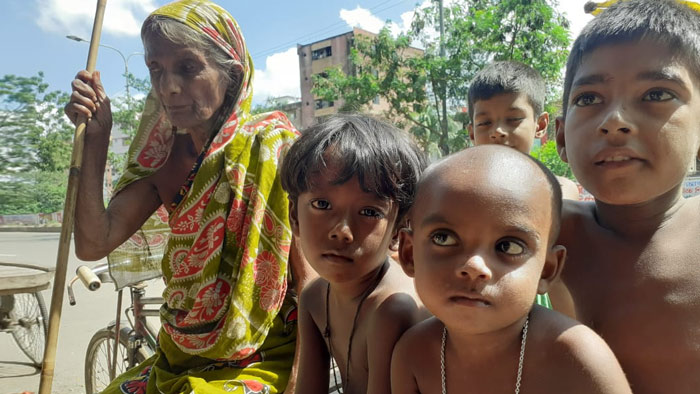
Helpless Tahera Khatun and some children. Place Malibagh.
A temporary shack house on an island on a plastic canopy in the middle of the busy road of the capital's Karwanbazar market. It is drenching heavily. Rehena Begum is sitting inside with her disabled son.
There is no house! Why here? When asked to know, he regretfully said, 'I have no home, just a little place to hide my head; Not even that. You have to stay on this road in stormy weather. Where will I go?'
Tears washed away by the rush of rain water. Rehena Begum said, "My Husband’s house was in Rajshahi, when the house was destroyed by the river, we moved to Dhaka city 7-8 years ago with the hope of a new life." But there is no place to stay here. As a result, I started living on the streets. I was in Begunbari area for a few years, now I am here in Karwan Bazar. "
“I have two daughters and one son. The boy is disabled. I live without eating with him. My husband Haider Ali is suffering from various diseases. Can't even do that kind of work. There are many problems with this child, I can't even get proper treatment," said Rehana Begum, wiping her eyes.
In this way, many people in Dhaka city are constantly struggling to survive. Some have lost their habitat due to river erosion, some due to floods, some due to storms and are taking shelter in this city. Some people come to the village to live in a shanty house or a hut on the side of the road in the hope of a new life as their income decreases.
Bangladesh is one of the vulnerable country to climate change. Thousands of people are rendered homeless and unemployed every year. Bulk of the people are at risk due to floods, droughts, cyclones, tidal waves, tornadoes, earthquakes, riverbeds, fragile infrastructure, poverty, threatened agriculture and waterlogging and soil salinity etc. Such changes in climate are having a detrimental effect on the country's agriculture, infrastructure and lifestyle. As a result, the flow towards the city is also increasing due to the food production crisis. However, many of these people make a living by driving rickshaws or working in garment factories, but most of them remain unemployed and adrift.
Professor of Population Science Department of Dhaka University. Mohammad Moinul Islam said, "About 2 crore people of these three categories of permanent, temporary and floating are living in Dhaka city. Among them, 36 to 40 percent of people are floating. We have no plans for these floating people. No one is even thinking about them.”
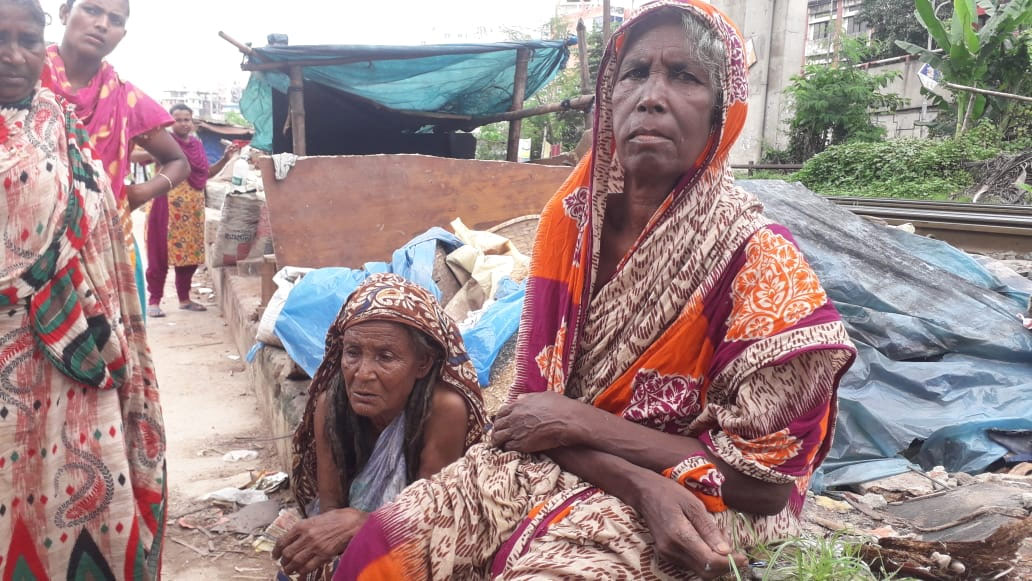 Jahanara Begum lives next to the road in Banglamotor area of Dhaka. He moved to Dhaka city three years ago as the houses were washed away by the flood in Kurigram. Jahanara is fighting alone with two small children. As her husband left her for a relationship with another girl, she and her two children are now spending days without food.
Jahanara Begum lives next to the road in Banglamotor area of Dhaka. He moved to Dhaka city three years ago as the houses were washed away by the flood in Kurigram. Jahanara is fighting alone with two small children. As her husband left her for a relationship with another girl, she and her two children are now spending days without food.
Saleha Begum said with wistful eyes, "I have lost all my property by myself. Now there is nothing. I am lying on the side of the road with two boys and girls. husband left This is my destiny. I can't throw the kids away."
Constantly many such people have become homeless. But there is no system for them. There is no one for all these people. According to a statistics, 4.5 million people are at such risk in the coastal area. It is already known that 6 million climate refugees have taken shelter in various cities including the capital.
According to Bangladesh Bureau of Statistics (BBS) data, an average of 1,700 people are entering Dhaka city every day. 6 lakh 12 thousand new people are joining this city every year. Although the government has taken various initiatives to make Dhaka livable, various problems including traffic congestion, air pollution, waterlogging, waste management are increasing in the city due to the pressure of extra people.
Professor Moinul said, "Housing should be arranged in specific areas for these homeless people. Various projects have to be undertaken for their rehabilitation. Targeted employment initiatives will reduce the number of floating people. The city corporation should be more proactive to provide them with accommodation. Besides, various NGOs should come forward."
Many of these people once had houses but now they have nothing. Taking shelter with a small bag on the street or the corner of a building.
On the surface, it can be seen in Gulistan, Railway Station, Farmgate, Rajuk, Osmani Udyan, Stadium, Karwan Bazar, Khilgaon, Kamalapur, TSC, Airport, Jatrabari, Sadarghat in these areas at night under the bridge, on the island of the main road, in vans, beside the railway line. He sleeps under various offices wherever he gets a chance. In the morning, it goes back and forth again.
These homeless people are sometimes harassed by the police. Again, when the bulldozers of the city corporation crush this small cottage of theirs built on the side of the road, they cannot even find a way to escape with their belongings.
As people from different parts come to Dhaka, thousands of floating babies are born every year. There is no system for education and health of these children. Being born on the street, growing up on the street. Later many of them are becoming terrorists. Many people are losing their lives prematurely by indulging in murder.
Around different areas of the capital, homeless children have become addicted to the readily available drug called Dandy. It is a type of glue, also known as solution. Consuming it does not cause hunger and pain. In the long term, the brain, liver and kidneys can be damaged. Besides, some are intoxicated with ganja or polythene gum.
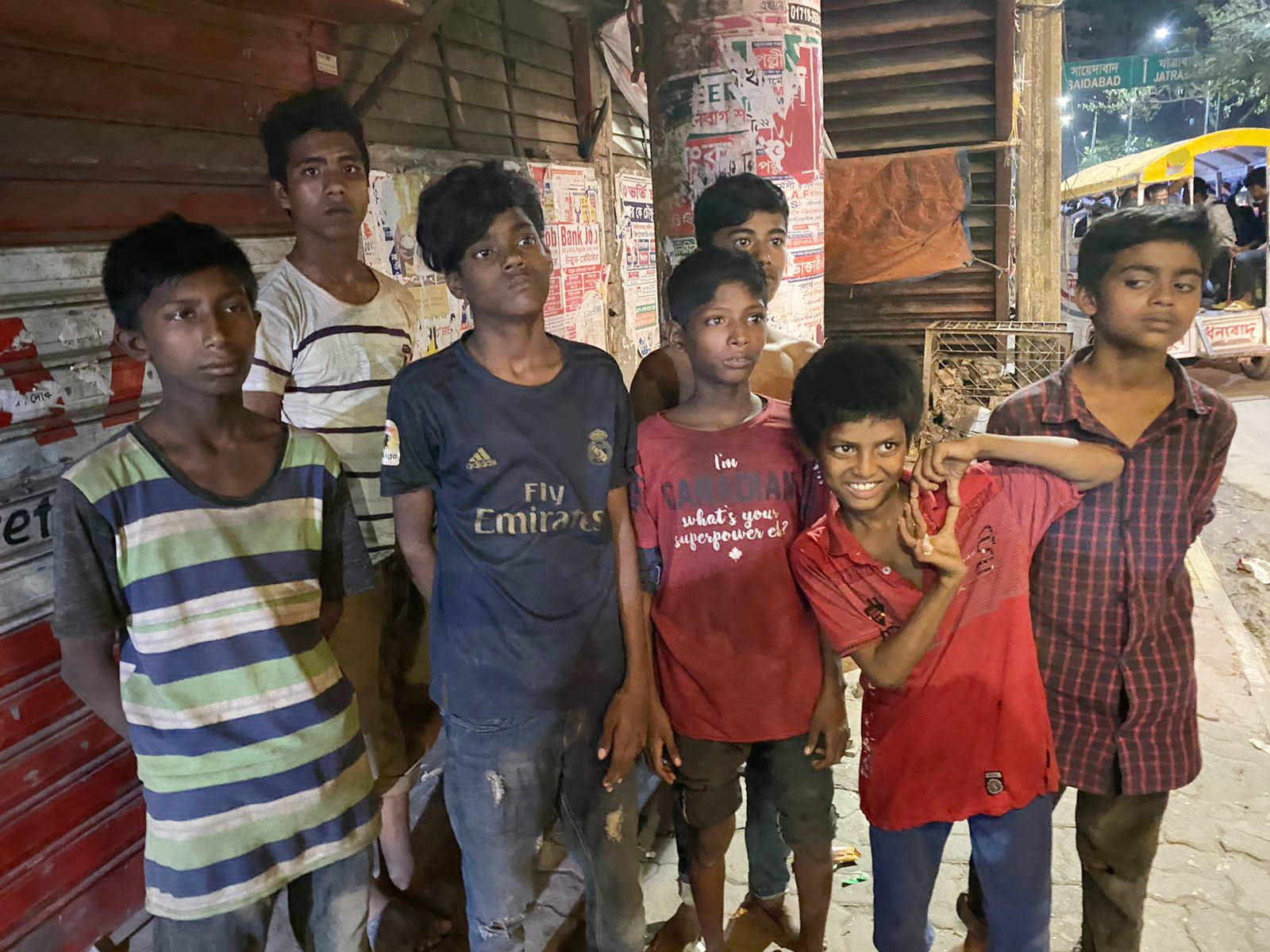 With the 6 boys who met under the Khilgaon flyover. Those who get drunk in groups around 11 pm. One of them is Mohammad Shahjalal. Age will be 8 or 9 years. Home in Mymensingh. When the parents get separated, the mother gets married elsewhere. Father also remarried. As a result, he was separated from the family. Shahjalal said, he has no one now. No one even looks for him. Lives on the street, sleeps on the street. eats when he gets it; If not, there is fasting. And spend the whole day hanging out with friends.
With the 6 boys who met under the Khilgaon flyover. Those who get drunk in groups around 11 pm. One of them is Mohammad Shahjalal. Age will be 8 or 9 years. Home in Mymensingh. When the parents get separated, the mother gets married elsewhere. Father also remarried. As a result, he was separated from the family. Shahjalal said, he has no one now. No one even looks for him. Lives on the street, sleeps on the street. eats when he gets it; If not, there is fasting. And spend the whole day hanging out with friends.
Showing the polythene in his hand, he says, "Here let's eat these."
Another teenager named Nayan, who many call Moni. He said that his village is Comilla. Moved from home to Dhaka. No one in the family keeps track of him. Stays on the sidewalk. Sometimes they try to steal. When caught by the police, he gave two houses and released him again.
Farzana Akhtar met Asma with a small child in the Banglamotor area of the capital. This 8-year-old child is missing one leg. He lives in a hut by the road. While talking to him, a woman in her fifties came forward. He said, the girl is unfortunate. He lost a leg at birth, and his mother died in infancy. Then they father married and left.
Asma stands aside on crutches, “I want to read and write, but how can I do it? I can't even eat properly. I have no legs, I can't even work. I was there in Rangpur. Later I came to Dhaka with my grandmother. Father does not inquire. Nani works as a maid at home. It does not affect us.”
These street children are deprived of many opportunities including education, health, nutrition. They have no fixed place. Roads, open air, footpaths, parks, railway stations, ferries, launch terminals or bus stations are their places of residence. Wearing untidy clothes all day, no shower day after day, passing the day drowning in garbage.
Moniruzzaman Mukul, general secretary of research organization Scan Bangladesh spoke about this.
He said, "The United Nations Children's Fund UNICEF says that children for whom the streets are a place of residence or a means of livelihood are called street children. Accordingly, there are about 450,000 street children in Dhaka city. Around 2002-2003, it was like two and a half lakh. The number of these children is constantly increasing. They have no good system of education, health or anything. 85 percent of these children are addicted to drugs.
"The people are resorting to Dhaka as a result of the disasters in the coastal regions. As a result, arrivals from both Dhaka and outside are increasing rapidly. If you go to Sadarghat area of the capital, you can see that most of the people have lost their homes and come from the coast.
About the way out of this crisis, Mukul said, “Coordinated efforts are needed to protect these children. There is no separate department for children in our country. But 15 government agencies work for them. But the problem here is that there is no coordination between these organizations. That's why you can't do anything good even if you want to. In this regard, we are trying to form a 'cross sector body' to protect child rights. If a committee works with civil society under the responsibility of the Ministry of Women and Child Affairs, these children can be resettled quickly."
Not just children, there is also a large number of homeless elderly people in this city, who have no one. It can be seen in different areas, either the husband has died, or the children have married and separated, there are many who are completely destitute. As a result, they have settled on the sidewalk. Saleha Begum is one who has no home, no house, no children. After the death of her husband, her only recourse was a child. He also dies. As a result, Saleha was left alone.
"I used to live in Sarishabari of Jamalpur. From there I came to Dhaka about thirty years ago. There is no land in the village. At first, I used to live next to Kamalapur road. Now I live next to Khilgaon railway line. Husband died twenty years ago. I had a son later he also died. As a result, I became alone. Is my difficulties even describable? I can't see well now. I lie in bed when I am sick. Burnt in the sun, drenched in the rain, this life is over. I am not in a position to earn now," he said.
While talking to him, another old lady named Amena Begum came there. She has six children, but she has to live in a polythene house by the roadside. Regretfully said, "No child sees me. This is where I fall.”
Seventy-year-old Tahera Khatun lives on the pavement next to the road in Malibagh. She came to this city two years ago from Mymensingh holding her husband's hand. But now there is no husband. Died about 15 years ago. Poor Saleha had a child. But that child is also lost at a young age.
Tahera said, "Now I have no one but Allah. We were doing well. My husband Javed Ali had an accident. Then he goes home. Can't do anything else. Later dies. I have no place to go. Later they had to take shelter on the sidewalk. I used to work at home somehow. Meanwhile, my son also disappeared. I searched like crazy, but I didn't find it. I did not get married anymore. I can't even walk well now. There is no energy in the body. Eat if someone gives you something. Otherwise I stay."
Professor Dr. Mohammad Moinul Islam said that the Dhaka will become the fourth most populous city in the world, as the population may cross 2.8 million by 2030. The number of slums and slum dwellers is increasing in these densely populated cities. People are migrating from villages to cities. Here the number of extremely poor, poor, lower middle class people accounts for approximately 60 percent.
“We have no policy on national urbanization. We currently have no migration policy. There is lack of coordinated service delivery in urban healthcare, and no effective measures to mitigate traffic congestion. As a result, human suffering is escalating. Homeless people are increasing. First of all, the government should support these people. Houses should be provided for these homeless people. Actions should be undertaken immediately. Only then these people can also play a role in the development of the state."
Imran Khan, assistant director of the CSPB project of the government Department of Social Services, said, "We have activities for street children. We don't have a proper survey. However, there are about 11 lakh street children across the country and about 6 lakh children are staying in Dhaka city. We are providing services for these children through 3 Child Protection Services Hubs in Dhaka (Kamalapur, Sadarghat and Gabtali).
Children are being served by providing three meals a day, life skill base education, non-formal education, case management, counselling, awareness counseling.
He said that the government is providing old age allowance at the rate of Tk 500 per month to the elderly women (minimum 62 years) to protect them and lead a comfortable life. Government activities are ongoing for the development of floating people and elderly people.
AHS/



